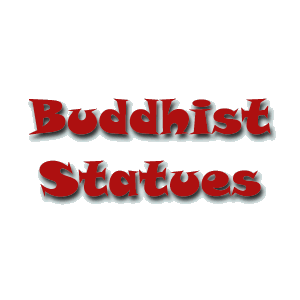



|
In the last issue we presented some Lohan statues. In this issue, we would like to talk about Buddhist statues in general. By definition, a Buddhist statue is a three-dimensional format of artistic presentation for Buddhism related subject matters. It was said that an Indian emperor living at the times of Shakyamuni Buddha, who was very devoted in Buddhism, was the first one to make Buddhist statues: he used gold to make a five-foot tall Buddha statue. At the times of the Cheng Dynasty, India was a powerful country and the emperor did a lot of things to promote Buddhism. But in the constructions under him, the statue of Buddha was avoided (usually, a Bodhi tree was used to represent the image for the living Buddha.) It was said that the reason for such avoidance was due to the assumption that the image of the Buddha was too sacred, too magnificent and too gracious to be represented by a statue. Any inappropriate representation would contaminate the gracious image of the Buddha in our mind. It was not until around 127 BC, during the Third Gathering of the Buddhist followers, that the legality of producing Buddhist statues was established. Quite a lot of Buddhist statues were created. It should be noticed that some Greek artists were involved and therefore influences of the Greek art in portrait and statues can be found in the Buddhist statues at that time.
The most predominant category of Buddhist statues are of course those of the Buddha. Such statues are mostly of standing or sitting posture. There are also in sleeping posture. The most common statue of the Buddha is of the double-lotus posture. Among some early statues, we can also find some in the walking posture. Other than the Shakyamuni Buddha, the statue of the Amitabha Buddha are also very common. For the Bodhisattvas, statues of Guangyin are the most popular format in China and after the Tang Dynasty all the Guangyin statues are of female form.
In China, a lot of the Buddhist statues are made of gold and brass. But stone, wood and jade are also being used a lot. Since Yuan Dynasty porcelain statues became quite popular.
|